
Mystery of Pentecost Revealed
The term 'Pentecost' is possibly the most overlooked and misunderstood word for Christians. Its roots go back to c.1500 B.C. and a command from God for Moses to create seven annual feasts. This command is today understood as not only the creation of seven feasts, but at the same time the giving of seven shadow prophecies. These prophecies concern the death, burial and resurrection of Christ. Also, the start of the Church Age, the date of the Rapture and Tribulation Period, and the date of the Second Coming of Christ. Jesus personally satisfied the first three of the seven shadow feast prophecies with His death, burial and resurrection. The fourth prophecy, or Feast of Pentecost, was satisfied with the arrival and indwelling of the Holy Spirit during this feast. The following is the fascinating story of Pentecost. Its literal and prophetic meaning is obvious to those with inquiring minds, but still a shadow mystery to those who are spiritually blind. Please see related: "Rapture and Tribulation Dates Revealed".
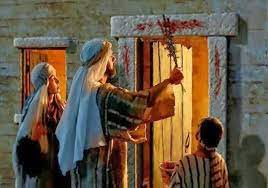
Moses was instructed by God to create seven annual feast dates. Four would occur in the Spring and three in the Fall. Several of these feasts are recognizable by the general public. The first is the Feast of Passover which occurs primarily in April. This commemorates the Jewish Exodus from the slavery of Egypt c.1,500 B.C. At that time, the Jews sacrificed a lamb and put its blood on their house doorposts so that the Angel of death would pass-over their homes. That night, the first born children and animals of the Egyptians died. The next morning, the Pharoah released the Jews to return to their promised land in Judah.
The second feast is less know. It is the Feast of Unleavened Bread. It takes place the day after Passover. This feast commemorates the unleavened or flat bread that the Jews quickly baked the night of Passover in order to have food to eat on the Exodus, starting the next day. The third feast is the Feast of First Fruits. It also takes place the day after Passover and involves the Jews taking the first fruits of their Spring grain crops into the Temple as an offering to thank God for a bountiful harvest.
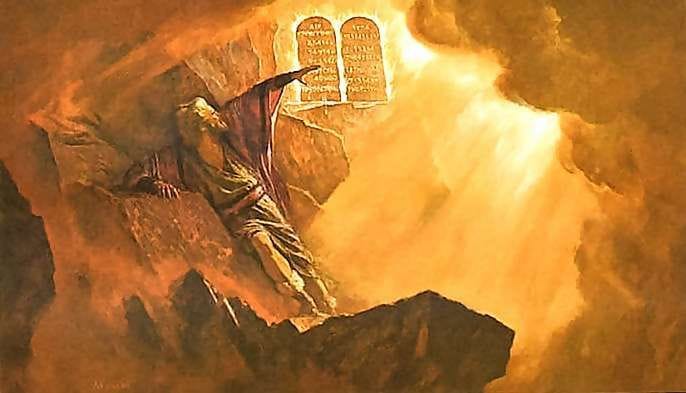
The fourth feast is called the Feast of Pentecost. This word is Greek for Festival of Weeks (Leviticus 23:15-21; Deuteronomy 16:9-12). The term Pentecost also means “fifty” as it takes place exactly fifty days after Passover. It commemorates the giving of the Law or Ten Commandments to Moses on Mount Sinai. So, the term Pentecost is not a Christian term. At the time of Jesus, it was a 1,500 year old memorial ritual for the Jews to remind them that they were under the law of God with a noncompliance penalty of death, the grave and Sheol or Hell.
It is well known by New Testament scholars that what is concealed in the Old Testament is revealed in the New Testament. Old Testament figures and prophets knew the existence of the Holy Spirit of God. Some of them were indwelled at times when God needed them to further His plans for His people the Jews. The problem was, once the mission was accomplished, the Holy Spirit would leave the person (I Samuel 10:10; I Samuel 16:14; Judges 3:10; Judges 6:34; Judges 13:25, 14:6). Prayers made to God for a permanent indwelling went unanswered. This is because God was saving the permanent indwelling of individuals for a time when the Messiah would first satisfy the sin debts of mankind. This gave a Holy God the justification He needed to be able to allow the Holy Spirit to permanently indwell unholy mankind.
The Old testament prophets gave many descriptive references to the elusive Holy Spirit. It was referred to as a “mighty” and “rushing” wind, and as “rushing water” as well as a “purifying fire” (Exodus 10:13; Psalm 18:42; Isaiah 11:15; Isaiah 44:3). This wind is also referred to as “Life” (Job 12:10) as “New” (John 3:8), and the “Breath of Life” both physical and spiritual as with Adam (Genesis 2:7). It is also referred to as “Fire” in the Old Testament (Exodus 3:2; 13:21-22; Isaiah 10:17). This “Fire” reference is associated with Jesus (Revelation 1:14, Revelation 19:12). The New Testament refers to the Holy Spirt as the Presence of God (Hebrews 12:29) and purification of human life (Joel 2:28-29, 32; Revelation 3:18).
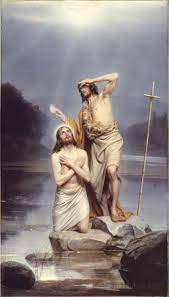
The first time we hear of the fire of the Holy Spirit as it relates to Jesus is from the last Old Testament prophet, John the Baptizer. He prophesied of a Pentecost when Jesus would baptized His followers, “with the Holy Spirit and with fire” (Matthew 3:11). Jesus would later confirm this prophecy with the promise of the Holy Spirit to His disciples (John 14:15-17). It was on the day that John baptized Jesus that he said he saw the Holy Spirit descend from Heaven like a fluttering dove and envelop Him. This was the first time the Holy Spirit had ever permanently indwelled a human being. The Spirit could do this as Jesus was without sin. Once Jesus paid the sin debts of mankind, God could then allow believers to also be permanently indwelled. With His baptism, Jesus was now fully capable of performing any and all miracles in the will of God.
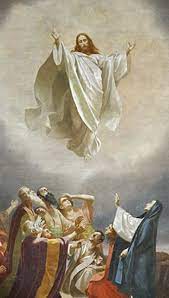
Jesus told His disciples that He had to return to Heaven in order for the Holy Spirit to be allowed to come to the Earth and indwell His followers. He referred to the Holy Spirit at this time as “The Comforter” (John 14:26). He told His disciples that, after He left them, they were to all wait together in Jerusalem for the Comforter or gift from His {biological} Father. And that, in a few days, they would be baptized with the Holy Spirit (Acts 1:4-5). Then, ten days before the Feast of Pentecost, Jesus led His disciples up into the Mount of Olives. There He blessed them, and at the same time began to slowly levitate or ascend up into the clouds (Acts 1:8-10).
The disciples stayed together in Jerusalem regularly meeting in an “upper room” for the next ten days. While they did not know when this Comforter would arrive, they did know that it was Jewish Law that all adult males were required to attend the Feast of Passover which also included in rapid succession the Feasts of Unleavened Bread and the Feast of First Fruits. All adult males were also required to attend the fourth Feast of Pentecost and the seventh Feast of Sukkot or Tabernacles which occurred in the Fall.
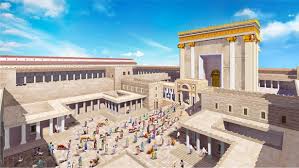
The Feast of Pentecost was held on the fiftieth day after Passover (Leviticus 23:15; Deuteronomy 16:9). It was now ten days since the ascension of Jesus. The Temple began its ceremonies at nine o’clock in the morning after the daily sacrifice of a lamb. This was the same time of day Jesus was put on the cross (Mark 15:25). The disciples were together probably sitting quietly and meekly in the shade of the Temple Plaza in prayer (Acts 2: 1). They would not have still been in the upper room of Acts chapter one as the disciples were required by Law to attend the Temple service and were likely joined by an additional one hundred and twenty devotes of Jesus (Acts 1:15). In Acts chapter two, we are told that the "wind" of the Holy Spirit “filled the house”. The word house is now referring to the day of Pentecost when the disciples had finally left the upper room of Acts 1, in order to entered the House of the Lord or Temple so as to participate in the feast. This location provided a space that could easily hold one hundred and twenty of Jesus’ closest followers plus many thousands of other attendees (Acts 2:1-4).
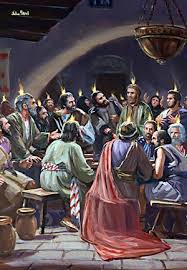
Suddenly, the disciples and all those Jews present in the plaza heard a sound like a mighty violent rushing wind, but eerily, no breeze was felt. This would have immediately caused a stir in the crowds. It was then that, “what appeared to be a {visible} fire”, came down from the sky. Scripture tells us that this single fire became “cloven” meaning it divided or separated itself into separate tongues or licks of flames each resting or hovering above each disciple. It was then that each disciple was indwelled or baptized by the fire of the Holy Spirt just as John had prophesied. And, just as God breathed life into Adam, the Holy Spirit breathed new life into the now born again disciples (Genesis 2:7).
It was then that the twelve were transformed from students of Jesus called disciples to preachers of Jesus now called Apostles. They were all immediately emboldened by the Holy Spirit to come out from hiding in the shadows and preach Christ as Messiah.
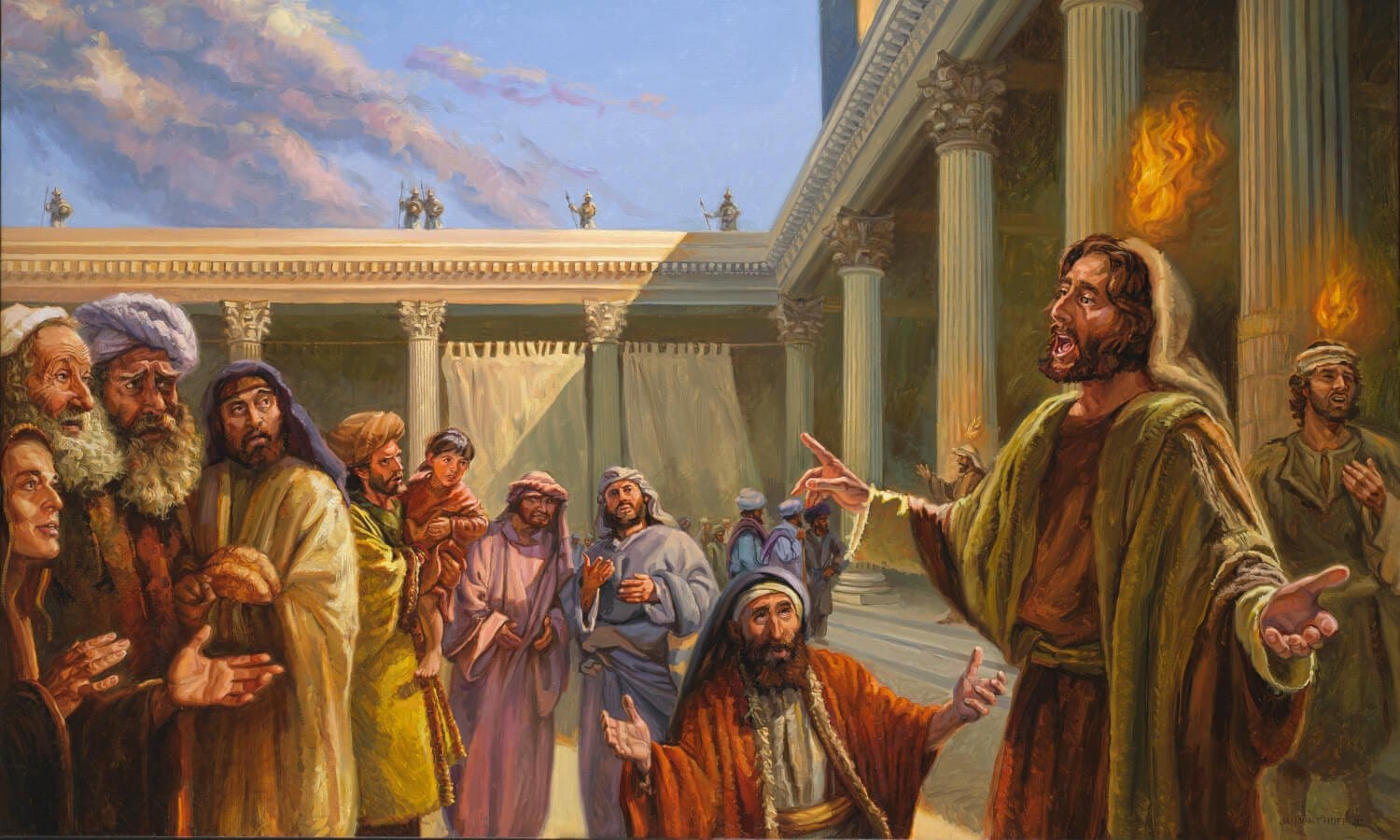
The Apostles obtained many gifts that the Holy Spirit bestowed upon them. They now preached fearlessly and fluently in their native tongue yet could be understood by foreigners. They could also produce miraculous signs and wonders. They each stood up and began to preach with “fiery” eloquence the Gospel to members of at least sixteen nations concerning the good news of the risen Messiah Jesus, and the offer of eternal life through faith plus nothing else (Acts 1:3-8; Acts 2:2-4; Acts 2:5-8; Acts 2:38-41; Acts 3:6-7; Acts 8:7).
These courageous Disciples were now the First Fruits of the Church Age. They were attempting to guide the spiritually blind Jews from the bondage of the Law to the freedom of grace and mercy. This is synonymous with the pillar of fire that appeared during the Exodus, and led them from bondage in Egypt to freedom in the promised land (Exodus 13:21). The day Moses delivered the Law, three thousand Jews were killed (Exodus 32:28). On Pentecost, Peter boldly preached Jesus crucified to a roughty international crowd. His words were understood and all were “cut to the heart” (Acts 2:37). Three thousand Jews heard, considered, repented, were baptized in the Spirit and received eternal life (Acts 2:38; Acts 2:41).
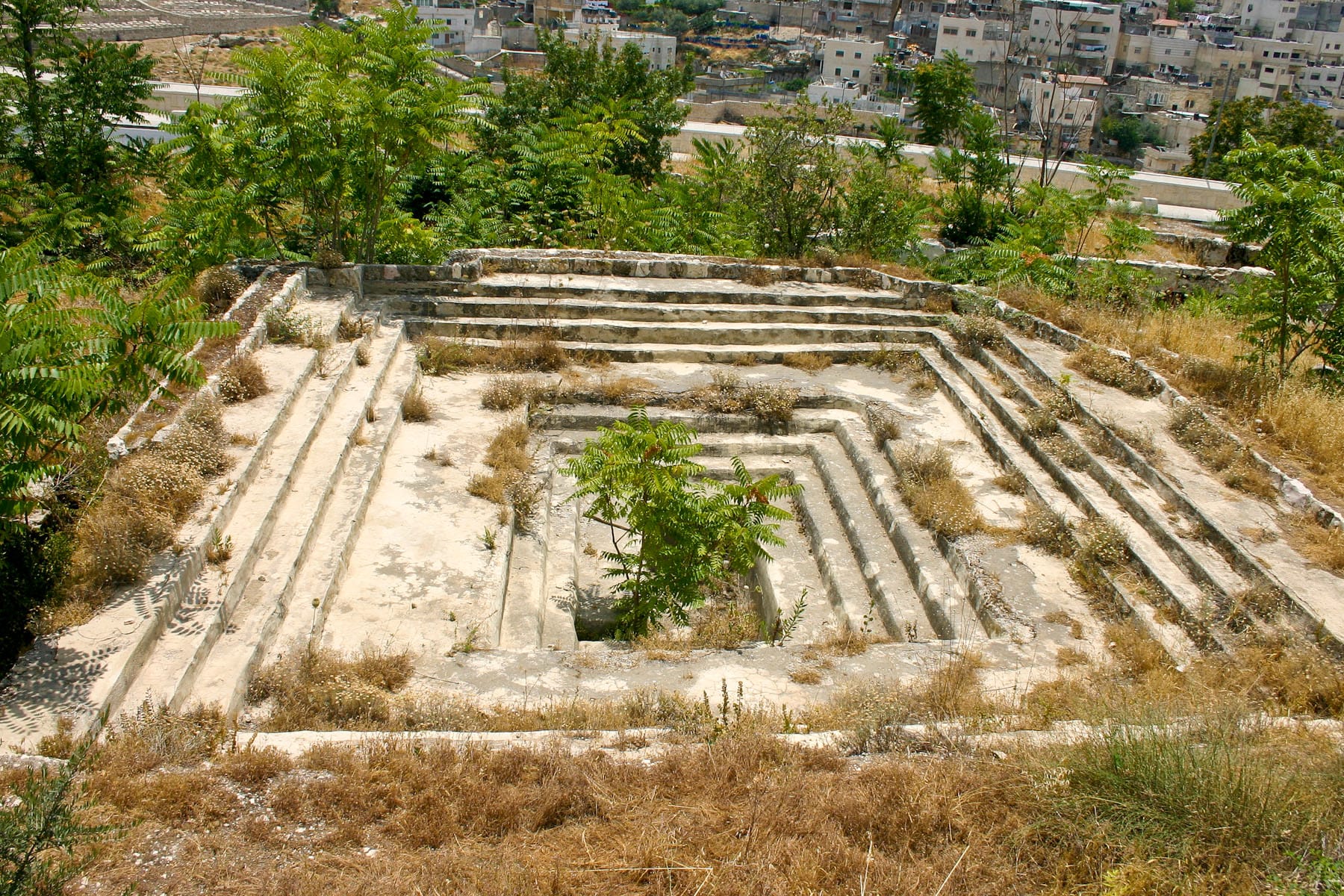
Jesus came first to the Jews and the Holy Spirit also came first to the Jews. This moment in time was the beginning of the two thousand year Church Age. The ability to successfully spread the Gospel to the nations of the world could not happen until the arrival of the power of the Holy Spirit (Acts 1:4-5). By the end of the first century, it is estimated that over five million people believed in Christ (Acts 8:4; 11:19-21)!
The word “Church” comes from two Greek words that together mean, “called out from the world for God.” It is also used to refer to all those who have been Born Again (John 3:3). A person is born again when they profess faith in the death, burial and resurrection of Jesus (Romans 10:9-10). The word Church is also synonymous with the term Body of Christ (Ephesians 1:22-23; Colossians 1:18).
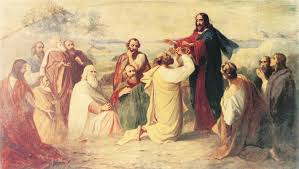
The word Church first appears in the Book of Matthew when Jesus tells Peter, “On this rock I will build My Church, and the gates of Hell will not overcome it.” (Matthew 16:18). The word “rock” here is directly referring to Peter identifying Jesus as the Messiah, the Son of the Living God (Matthew 16: 16). The understanding of who Jesus is, serves as the bedrock of the Church founded by Jesus and approved by God the Father. Anyone who makes this truth the spiritual foundation of their lives is immediately indwelled by the Holy Spirit, born again and becomes an eternal member of Jesus’ Church and God's family (Acts 16:31).
The Apostles began to preach Jesus as Messiah openly to the Jewish crowds in the Temple Plaza. Under normal circumstances, they would have quickly been silenced by the Temple guards who were always ever present during feast days. However, the Jewish religious leaders were at a loss to understand exactly what they themselves were witnessing. It was an inexplicable miracle and it was happening on the Temple Mount! So what exactly had the guards and pharisees so mystified?
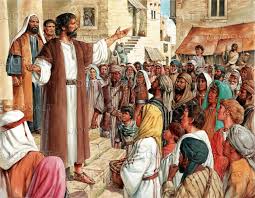
Scripture tells us that while the Apostles were speaking in the common languages of either Hebrew, Aramaic or Greek, all the people from approximately sixteen nations were hearing and understanding the Apostles in their own native tongues (Acts 2:2-4; Acts 2:7-8). This ability combined with hearing a violent wind with no breeze (John 3:8), and seeing fire come down from the sky, convinced everyone that this could only be a sign from God (Hebrews 12:29). And while the religious leaders also saw this as an act of God, they could not comprehend why He would allow the peaching of Jesus, a convicted blasphemer, to be publicly proclaimed during a major feast day.
This event was a demonstration that while all people are different from each other in various ways, all are united by one Spirit into one body through a belief in Christ (I Corinthians 12:13). All are co-heirs with Christ. The same Spirit that raised Christ from the dead lives inside all believers (Romans 8:9-11). That same spirit that indwelled the Apostles during the Pentecost of 33 A.D., is the same one that still indwells all believers today. The Spirit that raised Christ, is the same Spirit that will raise His followers.
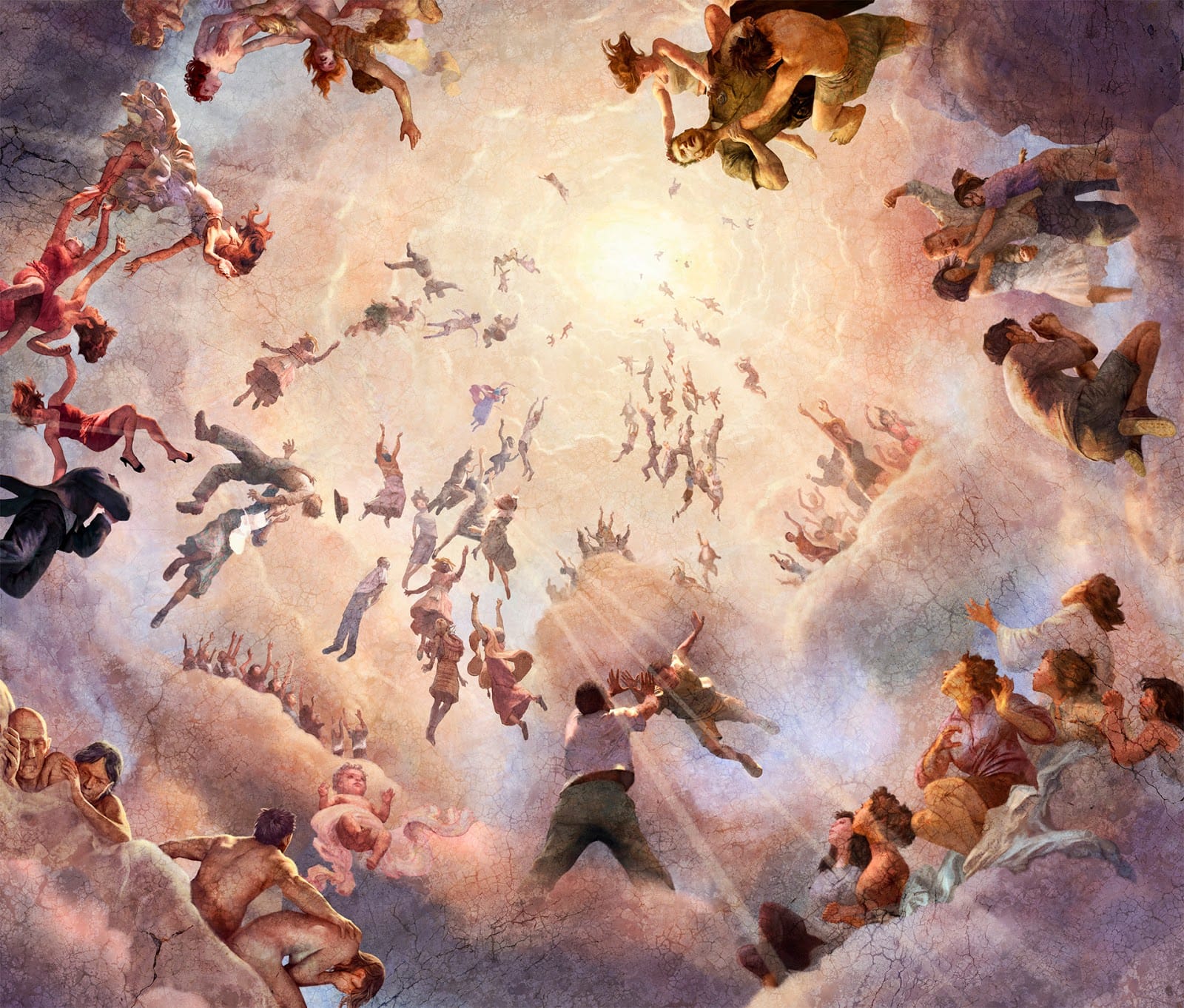
With Pentecost and the indwelling of the Holy Spirit, the harvest under the New Covenant had begun. That harvest continues as people continue to be saved. But the Church Age harvest is coming to a close. One day the Great Rapture of the Church will occur. At that time, approximately 2.5 billion Christians and as many children will seem to disappear off the face of the Earth leaving one final harvest out of the remaining 3 billion people. This harvest is referred to in the Old Testament as the gleanings. This is the time period when God will once again turn His full attention on the spiritually lost Jews and gentiles of the world. His desire is that all Israel will believe in Christ and be raptured before the coming Tribulation (Romans 11:26). But sadly, the Jews remain partially spiritually blind and as such, will have to endure a time of great suffering. On a somewhat brighter note, Scripture tells us that a small remanent will eventually believe in Christ and be saved (Romans 9:26-28).
On Pentecost, Jesus was true to His Word and all followers of Christ are now changed forever. The visible incarnation of the invisible Creator God dwelt among mankind. He created a way that mankind could obtain, through faith, the indwelling of the Spirit of their Creator and eternal life for all generations to come. Our commission is to help spread this good news to the world.
“These {Christians} that have turned the world upside down, have now come here also to us” (Acts 17:6: Acts 2:39).
On a final note: Jesus was crucified on April 3rd, 33 A.D. He arose on Sunday April the 5th. He was seen by many of His followers for the next forty days. He met with His disciples on the Mount of Olives on the 40th day. He gave them final instructions and was in the process of blessing them and His future followers when He was raptured back into Heaven. This event occurred on May 15th ten days before the Feast of Pentecost. And, while many churches celebrate 'Pentecost Sunday', the actual date is May 25th regardless of the day of the week.
Food for thought: Since Jesus was raptured into Heaven on May 15th, will He Rapture His followers up into Heaven on this same date? Further, since He ascended on this date, will He descend back down to the Earth on this date at His Second Coming? The 2,000 year anniversary of all these major events in the ministry of Christ will occur in the year 2033.
If you enjoy the information provided on this site, please consider making a donation of any amount to help continue its production. Donate Now